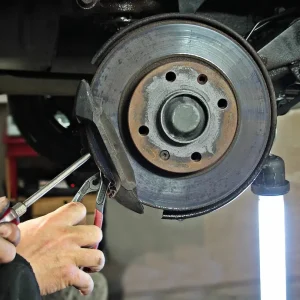There are more fleets than ever installing CO2 caps, and although these are falling, there are further reductions to come, according to the results of research carried out by BusinessCar and the UK’s biggest leasing firm, Lex Autolease.
Retracing some of the ground first covered in late 2011 by the same parties, the results of a survey of fleet operators and drivers found that 58.1% of respondents’ fleets now have a CO2 restriction, compared with the 40.6% confirming that was the case in 2011.
The biggest change, though, appears to be in communication, with just 1.6% of respondents not aware of whether their fleet has a cap, compared with 22.9% two years ago.
But the level of the cap is also important because, in 2011, 43.3% of those with a limit had it set at 160g/km.
Tax changes and increased fuel costs have had an impact over the past 24 months, and we’re now looking at 44% of respondents with a CO2 limit on their policies being at 130g/km or below, with 20.9% at 120g/km or below, the latter compared with 4.5% in 2011.
“It’s fair to use the word ‘leapt’ in terms of the number of 120g/km policies, and it’s because of taxation forcing people’s hand,” explains Lex Autolease’s principle consultant Chris Chandler. “There is a good choice of good-quality vehicles – you’re not driving a slow dull car and you can choose low CO2 and have a nice enjoyable vehicle.”
Chandler says the fact that 47% of Lex Autolease’s fleet is now under 120g/km illustrates how far the market has come, and commends manufacturers for their efforts.
“I don’t think you can say anything other than a very positive pat on the back for good-quality vehicles down to that level,” he says.
The surprise statistic was that there has been little change in the number of fleets adopting a sub-100g/km fleet policy. It’s still very much a minority, with just 2.3% currently at that level, despite 10.7% of Lex’s fleet being sub-100g/km cars and the choice rapidly improving from all manufacturers.
“I wonder whether some customers would have multi-brand policies, maybe sub-100g/km for essential-user fleets and sub-120g/km for user-choosers,” speculates Chandler. “But it’s very positive and there doesn’t seem to be any let-up in desire to introduce CO2 limits.”
That point is reinforced by the 8.0% of fleet respondents that don’t have a CO2 cap but are expecting one in the next 12 months, while 44% didn’t know whether there would be one, and 48% were certain no emissions limit would be imposed on their list in the next year.
Although 2010 is still the dominant year in terms of when a CO2 cap was introduced, the past two years have seen significant numbers of fleets introduce a limit on their fleet vehicles.
Chandler believes that fleets serious about a relevant CO2 cap need to have it somewhere between 100-130g/km.
“I think 130g/km is now where 160g/km was. 160g/km was relevant when there were tax breaks at that level, but now that lease accounting and writing down have moved to 130g/km, you would have to question some of the higher caps,” he says.
“If you want to do it seriously, it needs to be in the 100-130g/km region. It depends on the business’s cars; they may not want to have different levels, but certainly we would be looking at 100-130g/km depending on the requirement of the customer.”
A good number of respondents professed to having hybrids and alternative-fuelled cars on their fleet. More than six out of 10 have petrol or diesel hybrids such as the Toyota Prius within their business, which compares with 50% two years ago. Chandler puts that down, at least in part, to companies having a diesel-only policy, rather than specifically excluding hybrid technology.
But in 2013 we have also asked about whether fleets have electric or plug-in vehicles on their fleet. While 64.3% said they hadn’t yet dabbled in the latest technology, 7.1% have a pure-electric model, and 21.4% said they have at least one plug-in hybrid.

Light commercial vehicles on the move
While the focus remains on car emissions – they are, after all, dominant in terms of volume, and change can be driven by business and personal taxation – light commercial vehicle CO2 is also plunging.
Since the end of 2011, the average emissions of new LCVs signed onto Lex Autolease contracts has dropped from 223g/km in December 2011 to 178g/km at the end of August 2013, or 20.2% (see table below). In the same period, emissions for new car contracts dropped by 8.5% from 141g/km to 129g/km.
“Commercial vehicles are very much playing catch-up, and I’m not necessarily being negative against commercial vehicle operators,” Lex Autolease’s principle consultant Chris Chandler tells BusinessCar. “Where the tax network in place for company cars was of much greater focus, there weren’t those streams for LCVs.”
He said operators are starting to appreciate the increased efficiency and its importance for light commercial vehicles, but it is still prioritised behind load capacity, fitness for purpose and accessibility.





